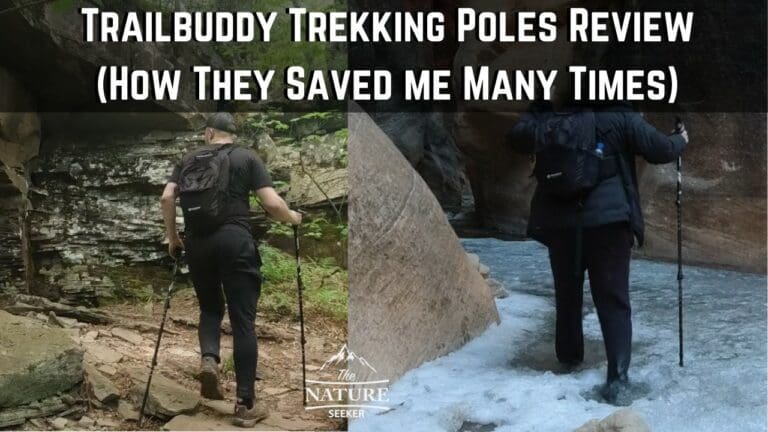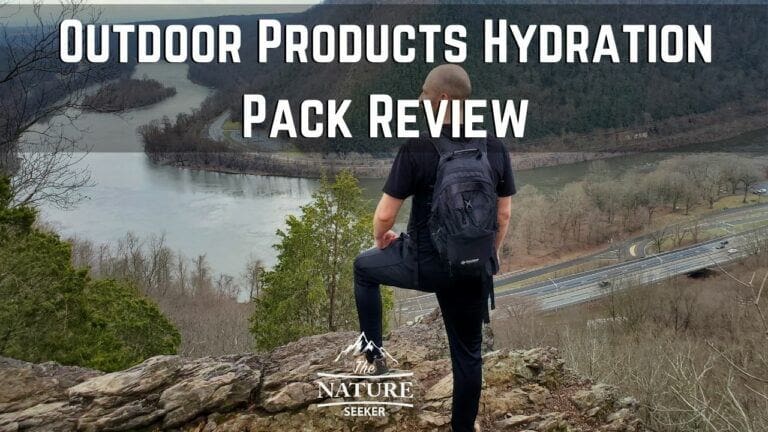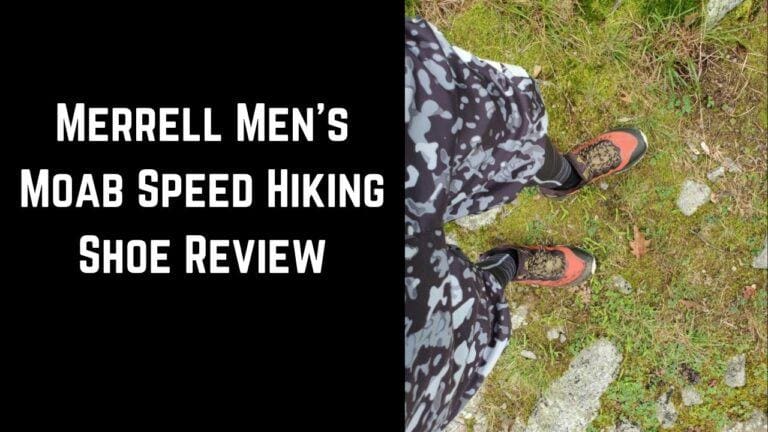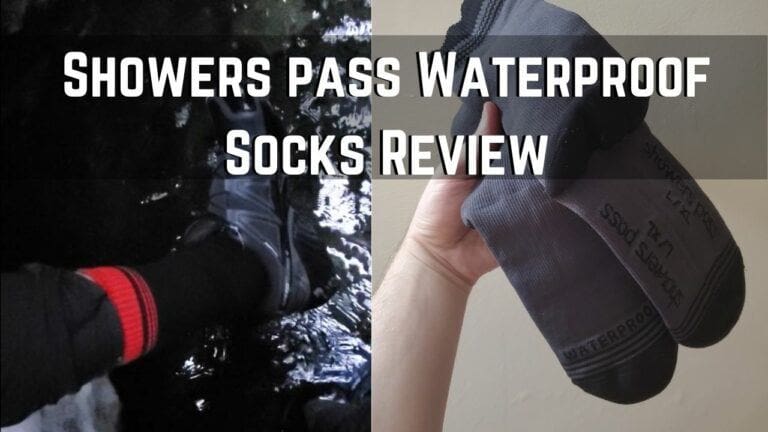Best Knee Support For Hiking: My Top 4 Recommendations
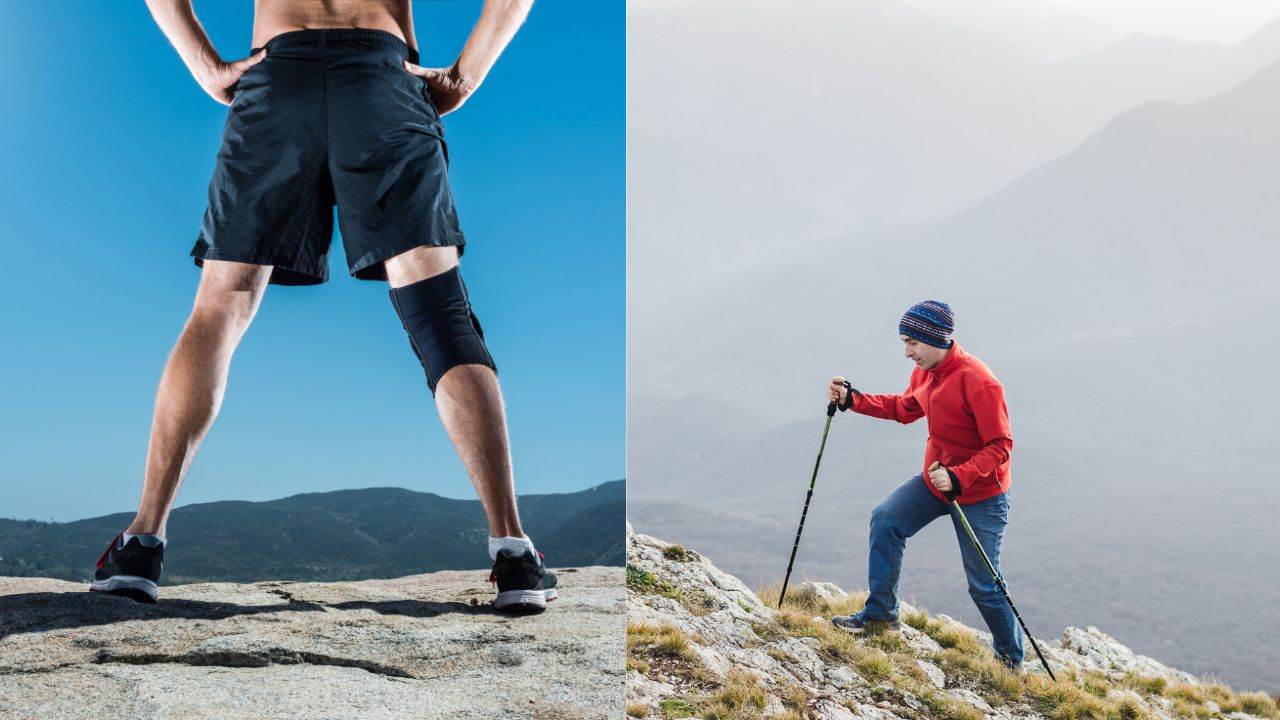
If you’ve ever tackled a steep trail or hiked through rugged terrain, you know that it’s not just a workout for your lungs and legs, but also a test for your knees. Knee pain and discomfort are widespread among hikers and can be a significant damper on what should be an exhilarating experience. In this post, I’m going to explain why taking care of your knees is crucial when you’re out on the trail and the best products that can help with that.
This isn’t just about avoiding discomfort; it’s also about long-term health as I found out when I suffered from this problem for years when hiking. Knee injuries are no small matter, and they can stem from the constant impact of hiking as well as accidents that occur on unpredictable surfaces. I’ll delve into how knee supports can act as a vital component of your hiking gear, helping to alleviate stress on your joints and minimize the risk of injury.
Now, you might wonder what the best approach to preventing knee pain during hikes is. I’m here to help you with that. Wearing the right knee support is one vital strategy. By offering compression and stability, knee supports can significantly improve your hiking experience. Of course, that leads to the pressing question – which knee support is suitable for you?
In my opinion, the best knee support for you is the one that meets your individual knee health needs, fits comfortably, and stands up to the elements of nature. So, if you want to explore the great outdoors without worrying too much about knee pain, choose something that resonates with you in terms of comfort, support, and material.
There’s a lot of opportunity in finding the right knee support for your hiking adventures. And guess what? That’s going to include understanding the differences between various types of knee supports. Brace yourselves; we’re about to step into the next section, which breaks down braces, sleeves, and straps to help choose the best fit for your journey.
Analyzing the 2 main types of knee supports: Braces and trekking poles

Hikers often face a bewildering array of options when searching for knee support. Let’s break it down. There are primarily 2 types of knee supports used by outdoor enthusiasts:
(1) Knee braces, sleeves and straps: Each offers differing levels of stabilization and comfort, so it’s critical to understand their distinct functions to choose what’s best for your journey on the trails.
Braces are the sturdiest of the bunch, providing a robust framework to support weak or injured knees. They typically feature metal or plastic supports, known as stays, which are great for those recovering from serious injury. If you’re going to be tackling rugged terrain, a brace may be your best friend.
Then there are sleeves, which are pulled on like socks and are made of stretchy, compressive material. They’re ideal for general support and are quite popular due to their ease of use and discrete fit under clothing. They excel in providing warmth and reducing swelling, making them a favorite for maintaining knee health over long hikes.
Straps, on the other hand, are simpler designs that wrap around the knee, just under the kneecap. They apply pressure to the patellar tendon and are amazingly effective at relieving the pain of conditions like Runner’s Knee. Plus, their minimal design means they won’t restrict your movement as much as larger supports might.
When considering materials, BREATHABILITY and DURABILITY should be at the top of your list. You’re going to sweat, and the last thing you need is your skin irritated by trapped moisture. And let’s not forget, the wilds can be unforgiving. Fabrics that resist wear-and-tear mean your knee support will keep pace with your adventures.
Selecting the right type of knee support involves considering the intensity of your hikes, pre-existing conditions, and personal comfort preferences. Remember, the goal is to enjoy hiking without worrying about knee pain. Now that you’ve got an idea of the different types of knee supports, let’s take a closer look at some of the best products out there, tailored to suit every hiker’s needs.
(2) Trekking poles: These are a highly underutilized tool in my opinion for knee support during hiking. As someone who has struggled with knee pain myself during many years of trail running, I can tell you that good trekking poles (and knowing how to use them correctly) can help a ton with regards to knee pain relief.
Top Picks: The Best Knee Supports for Hiking Enthusiasts
I’m going to walk you through some top-notch knee supports that have won over both professionals and weekend warriors alike. Choosing the right knee support can be daunting, but I’ve narrowed down the field to make your decision a little easier. The following products are highly rated:
(1) Neenca Knee Brace: This beast combines simplicity with stellar stabilization and has integrated spring coils that absorb the shock of uneven terrain so your knees don’t have to. It’s made with a blend of neoprene and nylon that guarantees both comfort and long-term durability. Get it here.
(2) IPOW 2 Knee Strap: It’s built for those minor aches and pains and is praised for its discreet sizing. The strap provides pinpointed pressure to help with conditions like patellar tendonitis, often encountered on steep descents. Get it here.
(3) Incrediwear Knee Sleeve: It wraps your knee in all-around support and is incredibly versatile. It’s ideal for mountain bikers and hikers who don’t let the forecast dictate their adventures. Get it here.
(4) Trailbuddy trekking poles: I have always used the Trailbuddy trekking poles for my hikes and have never had the need to upgrade because these helped me so much. I don’t even need to wear knee braces of any kind when I have trekking poles. They basically transfer over the weight I’d put on my knees over to my upper body, thus making the load on the knees way less. Get it here.
To wrap this section up, we’re not just looking at individual knee supports, but considering how they fit in with your overall hiking gear. So, before making any purchases, understand how it pairs with your boots, pack weight, and terrain type. This foresight can help prevent injury and ensure you’re supported every step of the way.
Proper Usage and Care: Maximizing the Benefits of Your Knee Support
Now, you’ve got the best knee support snuggly in place, ready to hit the trails with increased confidence. However, don’t just slap it on and forget about it – proper usage is crucial to really get the most out of it.
Here’s a quick rundown on how to wear your knee support: start by making sure your leg and the support are both dry. Slide it over your foot and gently roll or pull it up into the right position, where it feels snug but not restrictive. Adjust straps or fasteners as needed.
Here’s the deal with maintenance – keeping your knee support clean is a must. Sweat and dirt can break down the material and reduce its effectiveness. So, follow the manufacturer’s instructions: some may be machine washable, while others require a gentle hand wash. Air dry it to prevent any warping or stretching.
You’re going to find that even the best knee supports don’t last forever. Pay attention to signs of wear and tear such as thinning material, frayed straps, or weakened compression. These are indications that it’s time to consider getting a new one.
Addressing the source of the issue: Is it really the knees or hiking that’s the problem?
Aside from these tools I recommended, it’s entirely possible that your knee pain stems from another region of your body and in most cases it could be weak glutes. Consider exercises for strengthening the glutes and you may find that your knee pain gets much better, in which case I would focus even more on that area.
Remember, a knee support is a tool to aid your knee health, not a miracle cure. Combine its use with a well-rounded approach that includes proper footwear, strength training of the glutes and other muscles around it, and stretching for the best hiking experience. Safe travels on your next adventure!

